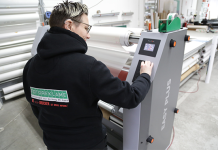Laurel Brunner of the Verdigris Project writes that ISO have recently published a document to help those in the printing industry make a start in achieving net-zero.
ISO Net-zero Guidelines comprises a series of recommendations and guiding principles. These are all about achieving net-zero global carbon dioxide and other polluting emissions in 2050. Net-zero Guidelines has an enormous scope covering everything from which basic principles to follow, through to communications transparency. The document aims to align all interests across industry sectors, nations, regions and cities, so it is globally relevant.
ISO have created a monster document, but it does provide precise terms and definitions for the language of net-zero. The importance of using common definitions and terms in net-zero conversations cannot be overestimated, especially since the net-zero conundrum is a global one involving many entities, from governments to individuals. The core principals mark out the territory for the net-zero journey such that they can be universally applied.
These principles require that: policies are aligned with existing common approaches to climate action; urgency requires the immediate setting of reduction targets and actions for reaching them; targets should be ambitious and immediate, particularly for large organisations; greenhouse gases (GHGs) emissions reduction is the starting point for interim and long-term net-zero targets; science and indigenous knowledge are the basis for decisions; risk assessments are conducted; efforts should be credible and targeted; reporting should be transparent; once achieved, net-zero efforts must continue to reduce GHGs; and all actions must align with the United Nations’ Sustainability Development Goals. The document’s principles are the foundation for a range of requirements for achieving net-zero.
The document explains that organisations should define boundaries when deciding on targets, monitoring and assessing progress towards net-zero. Robust governance should be in place to ensure progress. Leaders should demonstrate commitment and ensure that organisations have clearly defined roles for applying the principles and requirements of ISO Net-zero Guidelines.
Setting targets and making a start require planning and establishing priorities. This means having a starting point from which to measure emissions and some sort of baseline against which progress can be gauged. It’s also handy to use sector specific data for comparison purposes within supply chains and the industry sector.
ISO’s Net-zero Guidelines is comprehensive and thorough and could be useful to any printing or publishing company wanting to initiate moves towards net-zero for their organisation. We hope companies take up the challenge and make a start as soon as possible.
This article was produced by the Verdigris Project, an industry initiative intended to raise awareness of print’s positive environmental impact. Verdigris is supported by: FESPA (www.fespa.com), Fujifilm (www.fujifilm.com/sustainability/), HP (www.hp.com), Kodak (www.Kodak.com/go/sustainability), Practical Publishing (www.practicalpublishing.co.za), Miraclon (https://miraclon.com), Unity Publishing (http://unity-publishing.co.uk) and Xeikon (www.xeikon.com).
THE VERDIGRIS PROJECT
http://verdigrisproject.com/















